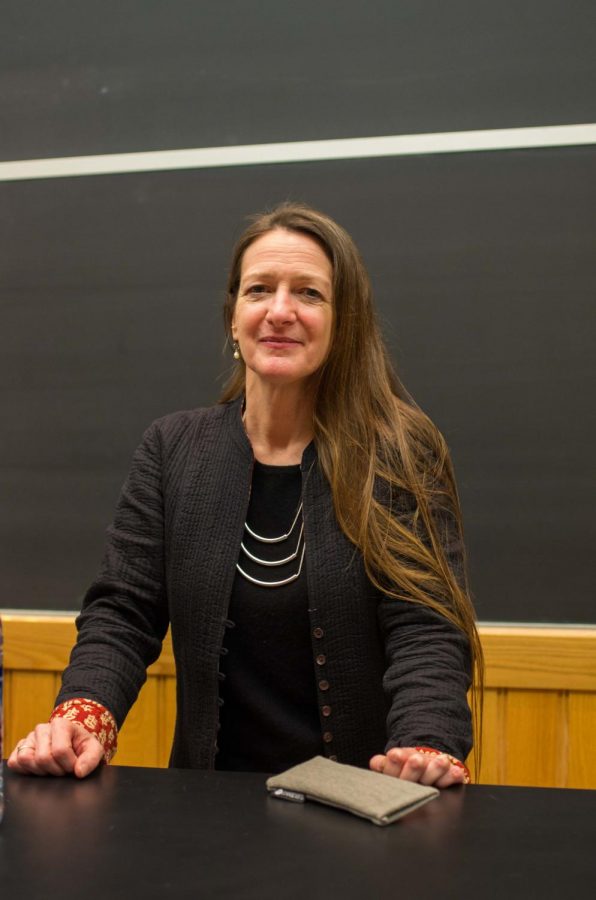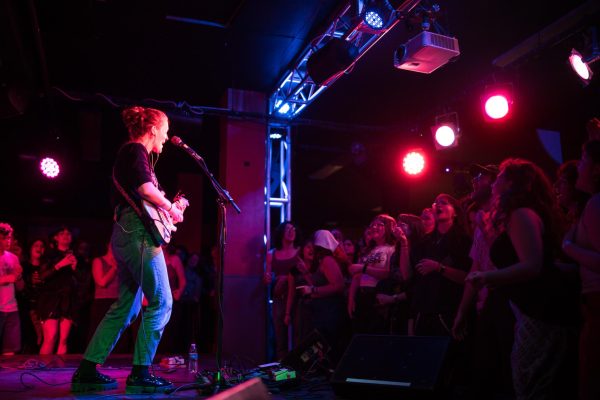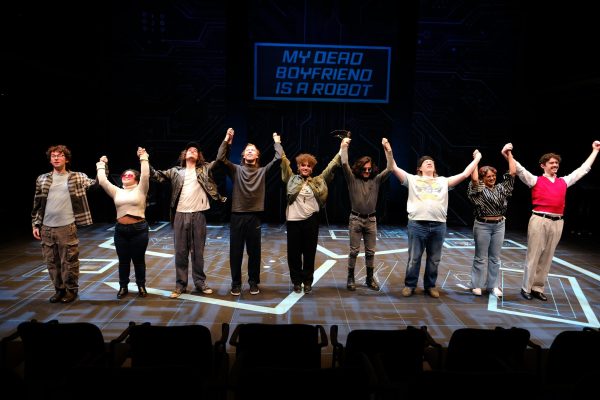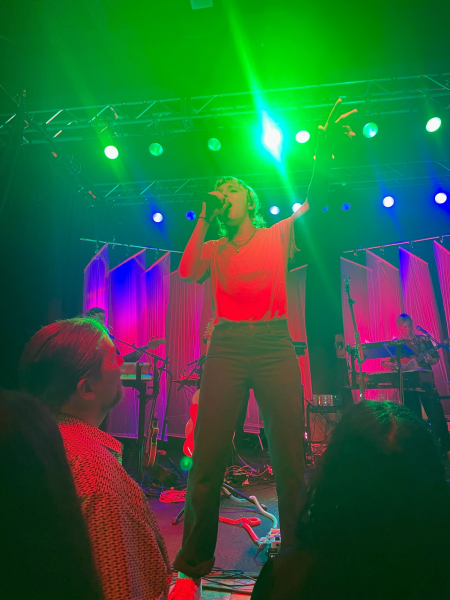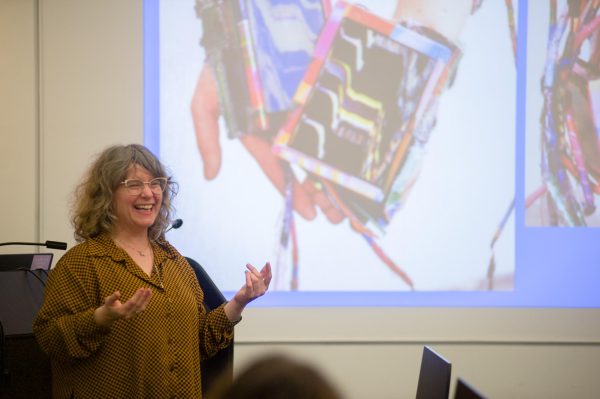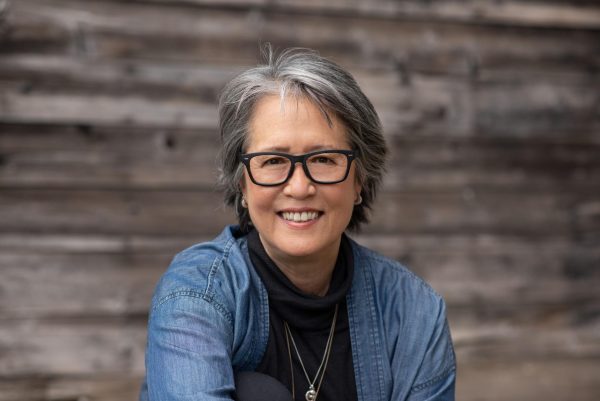Audrey Horning, Anthropologist
Audrey Horning, Professor of Anthropology.
Audrey Horning is an Arts and Sciences Distinguished Professor of Anthropology at the College of William & Mary. Her career has spanned from the directorship of an archaeological dig at the colonial site of Jamestown to extensive work studying and chronicling the relationship between culture and conflict in Northern Ireland. A fellow at the Senator George J. Mitchell Institute for Global Peace, Security and Justice at Queen’s University Belfast, Horning came to Oberlin Wednesday for a talk funded by the Archaeological Institute of America. She discussed the wide-ranging implications of the Dungiven Costume, a set of clothing discovered in the 1950s that has recently been subject to reinterpretation.
Interview conducted by Christian Bolles, Editor-in-Chief
This interview has been edited for length and clarity.
What were your early days of work like?
I sort of had two lives — one on this side of the Atlantic, and one on the other side of the Atlantic. So, this sort of overall research interest tied the two places together. So I spent five years directing excavations at Jamestown, which was great fun, and eventually turned that into my PhD. My PhD was originally going to be something entirely different, so if there’s any lesson in there for students, it’s that if an opportunity comes along, think about taking it rather than being fixed on a particular path. My work at Jamestown was comparative, and I wanted to spend time on the other side of the Atlantic looking at that side of the picture, and so I moved to Ireland and have been working there pretty much ever since the late ’90s.
How have those two spheres of study converged?
They join together in interesting ways, because basically the same time English are coming across the Atlantic and creating settlements like Jamestown, … of course displacing people who are already resident in those locations, they were also moving into and exerting political control over parts of Ireland. Some of the same people are involved in both places. And so I’m interested in comparing the two, especially in terms of the relationships between people on the ground — i.e. Native people here — the Gaelic Irish, as well as the descendants of Anglo-Normans who had been in Ireland for several hundred years before this new push in the 16th and 17th centuries. So, it’s a sort of cultural and anthropological angle: what happens when groups of people come together in somewhat antagonistic circumstances, but yet are thrown together and have to find ways of moving forward?
How does that relationship display itself in the material record, and does that differ between our side of the Atlantic and Ireland?
It’s very similar in that in both places, you have a written record that tells you one thing happened, and you have an archaeological record that tells you something very different. And written records reflect the opinions of the person doing the writing, or the plans, and the archaeological material is still biased because we interpret it, but it’s a little bit more democratic. So a good example would be to look at the English colonial effort in the north of Ireland, the Ulster Plantation. On paper, this was supposed to move all Irish people, and only protestant Scots and English were going to settle there. And it all looks great on paper, and they built towns and villages and everything. They were only supposed to build certain kinds of buildings — i.e. English timber-frames — and you actually look at maps from the period, and you look at the archaeological record, and, one, they’re not displacing all the Irish, because the Irish remain the majority in terms of the population on the ground. English people are either building, or certainly moving into Irish-style houses; they’re using Irish ceramics, Irish people are adapting English ceramics, and so it’s that sort of movement of material culture which is suggesting that people are engaging fairly significantly on a daily basis. And the same thing would be true if you look at a place like Jamestown. In the first decade of settlement there, 80 percent of ceramics coming out of the James Fort are Native ceramics. That’s 80 percent, so that’s saying something about food-ways, and trade, and reliance — and the documents say absolutely nothing about that.
Being very reliant on Native people for trade in order to survive?
Exactly. But being willing to, as well. And in both places, if you’re an English person, and you start cooking in either a Native-made pot or an Irish pot — and they’re very similar, they’re hand-built, they’re made to nestle down on coals, which is not the way English people normally would cook in that period — so it’s a deeper shift of practices.
When you see bleeding between English and Irish cultures, how do you account for organic bleeding as opposed to the workings of colonialism?
Well, they’re part of the same, I suppose. It is a colonial structure in place, politically, but within colonialism, you always have this impact in both directions. We used to believe that you could only see the imprint of the colonizer, and that was the only thing that mattered, and you measured the degrees to which colonized people change, and they only change in one direction. But colonized peoples impact colonizers as much as the reverse, and sometimes probably more so. We’re beginning to really acknowledge that.
Can you talk a bit about your presentation at Oberlin?
My talk tonight really picks up on the things we’ve just been discussing because it’s basically a tattered set of clothes that were found in a bog in the 1950s, which doesn’t sound very exciting. But the clothing probably dates to the 16th, early 17th century, so it’s the period when the English are coming in, there’s warfare between the Irish and the English, there are Scots involved — sometimes on the side of the Irish, sometimes on the side of the English — so it’s a very complicated period, and a period with a lot of violence and so forth. So the clothing was probably worn by somebody that went into the bog. It’s just one set of clothes, so it’s a jacket, it’s a pair of trews, which are sort of close-fitting trousers, it’s a pair of shoes, and it’s a mantle, which is an Irish style sort of cloak. It’s just one outfit somebody was wearing. No human remains were found, or at least they weren’t reported, but I’m fairly certain that when it went into the bog, the clothing was being worn. What’s interesting about this so-called costume is the mantle is a sort of quintessential Gaelic Irish piece of clothing; the jacket itself is very English in its style; and the trews, just to complete the whole story, are made out of tartan — so more than likely associated with highland Scotland. So we have an English jacket, we have an Irish mantle, we have Scottish trews, and then we have a pair of shoes that were probably first made by an English cobbler, because they’re using stitch construction, and then they were repaired in an Irish manner with leather thong construction, but the style is actually of an Irish style. So you have this complete hybrid outfit. It’s all heavily worn and patched, so these are second-hand articles, so somebody has cobbled this together. So it’s very difficult to say anything about the identity of the person wearing it. Maybe that was actually the norm at that time. Maybe it’s saying that this person was just at the lower end of the social scale. But whatever the story is, it forces us to question assumptions of absolute difference in that period between people’s identities and how they dealt with each other. Because that person walking down the street — you would not be able to guess what their identity would have been. So you’d probably just fix on the thing that you recognized — you know, “I’m Scottish, I see those trews, I recognize that tartan; I can communicate with this person.” The same: “Oh, very nice once-upon-a-time stylish English doublet, it’s like what I got in Dublin one day.” You know, “I can connect on that level.” It’s a very ambiguous set of material objects. Where it becomes useful in the present is it has been interpreted in various different ways — in ways that relate to contemporary divisions in northern Ireland. So it was interpreted for 50 years in the museum as being Gaelic Irish. All of it, the whole thing: “This is what Gaelic Irish people wore.” And then somebody of an Ulster-Scottish background protested about that, and said, “No, this is actually Ulster Scots, because of the tartan.” So what that boils down to in northern Ireland today is that this is either a Catholic Gaelic Irish outfit or it is a Scottish protestant outfit.
How is it that the Dungiven Costume has come to be reinterpreted? How did it break out of that schism?
Totally accidentally. I picked up the phone one day, and it was a woman that I knew who ran a cultural arts center in a place called Limavady[, Ireland]. And I’d done a bunch of talks with them before, because I’d excavated near Limavady. And she just said, “Would you come and give us a talk on March whatever,” and I said, “No problem, I’ll put it in the diary. I’ve got time that evening.” And I was just completely assuming she wanted me to come and talk about the excavation I’d done. And then she says, “Great, you’re scheduled for 7 p.m., it’s on the Dungiven Costume. That’s OK, right?”
At that point, I didn’t want to say, “I don’t actually know anything about it.” I knew a little; I knew what it was, I knew it existed. I had seen replicas in a museum. And so I had about two months to figure out what I was going to say about this thing. And it was the best piece of accidental research I’ve gotten to do in a long time. And so I had to, first off, get access to it — it hadn’t been looked at in… probably since it’d been found in 1956, because it was replicated at the time, and it was the replica that went on display. So it took a while for the museum to unearth it, but they let me look at it, they let me study it, let me think about it, and they ultimately got interested in the story that I’ve just told you in a quick nutshell. So they actually spent a lot of money to get it conserved, because they were in the middle of planning a new exhibit on late-medieval modern history, which is a challenging time to interpret in northern Ireland because of the contemporary ramifications. So they were actually really pleased to have a new view of the costume to feed into the way they were designing this exhibit, which was much more open-ended, about what stuff meant at the time. And they also were under fire from a person with a lot of political clout who was unhappy it wasn’t being interpreted as an Ulster-Scots set of objects.
What does this set of clothing say about what national identity meant at that particular time period?
What it would say about more of a cultural identity is [tricky]. Clearly, whoever was wearing it — even if they were the most impoverished person on the planet — I think would have been aware of the different associations of some of those elements of clothing. They may not have cared. We could say that ethnicity and identity and clothing didn’t really matter at the time, but I think that would be incorrect, because it’s a time period when what you wore was very much seen as representing who you were. So it’s a period of sumptuary laws, and only certain people of certain classes can wear certain kinds of things. Even if you looked at descriptions of Native people in eastern North America, there’s lots of emphasis on what they wear and what they don’t wear, and being “naked.” All these descriptions of people running around naked — they weren’t actually naked. But to English eyes, they were naked because they weren’t clothed “appropriately,” according to those assumptions. It’s meaningful for us today because we use it to signal certain things about ourselves in different settings, but arguably it was even more meaningful then.
How do you balance respecting and working with local communities with certain skewed expectations regarding anything of archaeological interest while maintaining objective archaeological ethics?
I think about that a lot, and I think it is respecting that people have different narratives and different understandings of their own history and where they’ve come from. My job in balancing those things you just said is, I can present them with the materials, with the evidence as it appears to be and suggest various possibilities, but they have to make up their minds what it actually means. So there will be some people who won’t be interested, or they already know, and that’s OK. You know, it’s not for me to tell them they’re wrong. But at the same time, I have a sort of an ethical responsibility to the person who presumably died wearing that clothing, because I’m now actually… You know, that’s deeply personal. You think about somebody going into your closet and telling the story of who you are — you want to do that as respectfully as possible. So it’s respecting what people think today, what their needs are, but also, archaeologists — we appoint ourselves to speak for dead people. And that’s a big responsibility.
What reactions or responses have you received based on your work with the costume?
Nobody’s thrown anything at me. I think people are generally very interested, and what people tend to do — which I think is great — is they all make suggestions. “Well, I think it was an O’Cahan,” which is a local Gaelic lordship in the region where it was found, … or, “I think this was an English soldier who got lost and he died in a bog,” or “I think it was a thief.” They could all be right, and that’s what’s so nice about having these kinds of conversations. Those suggestions are all informed by what they might want it to be, or their own experiences, but that’s no different from what an archaeologist does, too. We bring our own expectations to the story. I don’t mind that. I find that interesting, to see what explanations people come up with.
The goal becomes — and maybe this speaks to something larger about archaeology in general — more than telling a definitive story, to start a conversation?
That’s exactly what it is, because we never will know a definitive story, and if you try to tell a definitive story with great authority, then nobody else gets a chance and it becomes about you, the scholar, as opposed to about either the past or what other people might bring to it. So I like leaving it open-ended. You know, I have my favorite suspicions and thoughts about what the answer might be, but I’ll never know for sure. So I’d much rather have a conversation with people, especially when you’re looking at a past that is really resonant in the present.
The field of archaeology has changed a lot since this set of clothing was first discovered in the ’50s, but the use of new frameworks to reinterpret these kinds of discoveries is fairly new. What direction do you think the field needs to go in, even in specific ways?
Well, I suppose there’s two parts to that. One is dealing with things we know already exist and reinterpreting them, and the other is a matter of practice, and I think archaeology is shifting considerably now to being much more collaborative and inclusive — particularly people working broadly within things to do with colonialism in the way that I do, but it doesn’t really matter what period an archaeologist is looking at, because every site is situated in a local place, and every local place has a community or communities, and people who understand their localities, their spaces, in certain ways. It used to be we just ignored them, carried on, did our thing, and excavated and mined knowledge and took it away. And that is changing.


